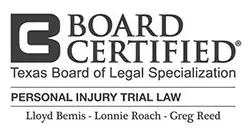Can Scleroderma qualify for Social Security disability benefits?
Can I get disability benefits if I am suffering from the effects of Systemic scleroderma?
Author: Attorney Lloyd Bemis
Updated: 2/1/2024
Approximately 300,000 Americans are affected by scleroderma, an autoimmune disease that causes hardening and tightening of the skin and connective tissue. There are two main types of scleroderma – localized and systemic. Localized affects only the skin and is usually mild while systemic scleroderma can affect the connective tissue in any part of the body, including the lungs, kidneys, blood vessels, heart, esophagus, and gastrointestinal system as well as the skin. Although children may develop scleroderma, it usually begins in people between the ages of 30 and 50 and affects women more than men. If you are suffering from the effects of Scleroderma you may qualify for disability benefits.

The SSA recognizes systemic sclerosis as an impairment under Section 14.00 Immune System Disorders. To be eligible for disability benefits, you must be able to provide medical documentation that you meet the definition as listed in its Blue Book.
Some common symptoms of scleroderma include:
- Difficulty breathing and reduced tolerance for exercise
- High blood pressure resulting in renal failure
- Irregular heartbeat and congestive heart failure
- Skin thickening or tightening
- Raynaud’s syndrome, an exaggerated sensitivity to cold temperatures that causes numbness, pain and color changes in fingers and toes
- Enlarged red blood vessels on the hands, face and around nail beds
- High blood pressure from kidney problems
- Shortness of breath
- Fatigue
- Joint pain
- Calcium deposits in the skin or other areas of the body
- Digestive problems such as difficulty swallowing or poor absorption of nutrients
These or a combination of these symptoms can cause you to miss work and jeopardize your ability to maintain employment.
Currently there is no cure, and treatment focuses on managing and controlling individual symptoms and preventing complications with medications, physical therapy and occupational therapy.
Demonstrating that you are following your doctor’s treatment plan is an important part of qualifying for disability benefits.
Can I qualify for Social Security Disability Income?
The disabling symptoms of systemic scleroderma create many daily challenges for those living with this condition.
As mentioned above, cases of localized scleroderma are usually mild; however, systemic scleroderma is considered an impairment by the Social Security Administration and is listed in its Blue Book under Section 14.04 Systemic Sclerosis (Scleroderma). If you have systemic scleroderma, you may qualify automatically for disability benefits if you meet all the requirements stated under the listing. In addition to a diagnosis of systemic sclerosis, you must have medical evidence of one of the following conditions.
- Two or more organs or body systems are involved, for example, the skin and lungs, with:
- One organ or body system affected to a moderate level of severity; and
- Two of the following symptoms – severe fatigue, fever, malaise, or involuntary weight loss.
- Contractures or deformities in hands or feet, with one of the following:
- a documented need for a walker, bilateral crutches or manual wheelchair that requires two hands; OR the inability to use one upper extremity to independently initiate, sustain, and complete work-related activities involving fine and gross movements AND a documented need for a one-handed, hand-held assistive device such as a cane; OR
- finger contractures or deformities in both hands that prevent you from performing fine and gross movements like lifting objects, sorting papers, holding a pen, or tying your shoe.
- Atrophy in Arms or Legs, with one of the following:
- irreversible atrophy in one or both legs that prevents you from walking without an assistive device that requires two hands such as a walker, or requires only one hand, such as a cane, but you’re unable to use the other hand due to a physical impairment; OR
- irreversible atrophy in both arms that prevents you from performing movements like lifting objects, sorting papers, holding a pen, or tying your shoe.
- Raynaud’s Phenomenon, with one of the following:
- gangrene in at least two limbs (arms and/or legs); OR
- ischemia (lack of blood supply) that prevents you from walking without an assistive device that requires two hands, or requires only one hand; OR
- ischemia that prevents you from performing movements like lifting objects, holding a pen, or tying shoes.
- You have “repeated manifestations” or recurring symptoms of systemic sclerosis that cause significant interference with your daily activities, social functioning or ability to complete tasks in a reasonable amount of time with two of the following symptoms:
- Fever
- Severe fatigue
- Malaise (feeling unwell)
- Involuntary weight loss
OR
You will need to provide complete medical records to Social Security as evidence of scleroderma, including visits to your doctor, your doctor’s treatment notes, blood tests, imaging such as MRIs, and organ function tests to see if the heart, lungs or kidneys are affected.
Ask your doctor to fill out an RFC (Residual Functional Capacity) form detailing your limitations in standing, sitting, walking and reaching. Make sure you include treatments you have tried and how you responded.
Once Social Security determines the limitations caused by your condition, they will employ a vocational expert to assess whether a person with these limitations is employable.
Most vocational experts will find a person to be unemployable if their condition or the treatment rendered for the condition causes the person to regularly be absent two or more days a month or be “off-task” 15% or more of the workday.
What if I don’t meet the requirements of Social Security’s listing?
If you don’t meet Social Security’s listing requirement for systemic sclerosis, you may still be eligible for disability benefits if you can show that your medical condition has limited your functional capacity to such an extent that you can no longer do your job.
For example, you may only be able to stand for short periods of time or walk short distances; you may also have problems with balance. Social Security will review your medical records and conduct its own RFC to decide if you can perform your last job, or any other job, taking into account whether you are able to drive, your age, and level of education. Social Security follows a set of medical-vocational grid rules to determine when the agency expects an applicant to learn a new job. Applicants older than 50 or 55 often fall under a grid rule, which means they don’t have to learn a new job. If you’re unable to work at your old job, or learn a new job, Social Security will likely grant you disability benefits.
You may also qualify for SSDI if you have another medical condition.
Applicants often suffer from more than one illness; while one disorder may not meet the requirements of a Social Security impairment listing, if you have more than one medical condition, Social Security must consider how your health issues combined together limit your ability to hold a job and perform routine tasks.
What are the basic financial requirements for SSDI?
If you meet all the criteria for scleroderma, you still won’t be approved for SSDI unless you satisfy Social Security’s basic financial requirements:
1) you must have a disability that has lasted, or is expected to last, 12 months, 2) you must have worked long enough and recently enough in a job where you paid Social Security taxes to accumulate a certain amount of work credits, and 3) your income must not be more than Substantial Gainful Activity (SGA), which in 2024 is $1,550 per month for nonblind applicants and $2,590 per month for blind applicants.
How do I file for Social Security Disability benefits?
You can apply for Social Security Disability benefits online, over the phone, or in person at your local Social Security Administration office.
Don’t be discouraged if your initial application is denied – most are, and you will have an opportunity to appeal. There are four steps to the appeal process:
- File a Request for Reconsideration with the Social Security Administration to completely review your case again.
- If your request for hearing is denied, you can request a hearing before an Administrative Law Judge (ALJ). ALJs are attorneys who work for Social Security who review SSDI cases and either uphold or overturn decisions to deny SSDI benefits. If you are not represented by an attorney, you should obtain legal counsel at this critical point to raise your chances for success.
- If an AJ denies your claim, you can request that the Appeals Council review your case.
- Federal Court review. The final step in the appeal process is filing suit in U.S. District Court.
What if I don’t qualify for SSDI?
If you haven’t worked long enough to accumulate enough work credits, you may be eligible for disability benefits through Social Security Income (SSI).
SSI is a program that pays monthly benefits to people with limited income and resources who are disabled, blind, or age 65 or older. SSI is based on income instead of work credits and is financed by general funds of the U.S. Treasury.
I have long-term disability insurance – should I file a claim?
Long-term disability insurance (LTD) is coverage to protect your income if you are unable to work due to illness or injury and is purchased as part of a group employment plan or privately through an insurance company.
Policies pay between 50-60% of your salary and benefits continue until you return to work, or for the number of years stated in the policy. If you have long-term disability insurance, you should file a claim right away. Do not quit your job before you file a claim because LTD coverage is good only as long as you are still employed. Be sure to check the policy’s definition of “disabled” as each policy will state the definition of “disabled” which is in use. Note that some LTD companies require claimants to apply for SSDI also, and it’s possible to receive both long-term disability insurance benefits and SSDI concurrently.
Do I need a disability attorney?
Applying for Social Security Disability benefits can be a long, complicated process.
An experienced Social Security disability attorney can gather all your medical records and file your initial application, avoiding delays and costly mistakes. At the request for reconsideration and hearing levels, an attorney can collect and submit relevant medical evidence, obtain doctors’ opinions, draft a brief to the ALJ, and prepare you for questioning by the judge. An attorney can also elicit helpful testimony from you and cross-examine vocational and medical experts, demonstrating your inability to work. At the Appeals Council and federal court level, a lawyer can present legal arguments to show your case was wrongfully denied. If your application is denied, your chances of approval are significantly increased if you have legal representation. The most you will pay is 25% of disability backpay you are owed because fees charged by disability attorneys are regulated by federal law. There are no out-of-pocket costs – if you don’t win your case, you won’t be charged anything.
If you are suffering from Systemic Scleroderma and have been denied disability don’t give up, almost 70% are denied initially! Just call 512-454-4000 for a free, no obligation consultation to learn what your options are. Have some questions? just give us a call, we love to help folks just like you!
LTD companies are not impartial, unlike the federal government in Social Security disability cases.
An experienced LTD attorney who knows the laws and regulations as well as the insurance companies and their policies can help you avoid serious mistakes and possibly losing your claim. An LTD attorney can also negotiate a settlement or file an appeal for you. Most LTD attorneys handle cases on a contingency basis and charge approximately 25%-40% of a claimant’s past due benefits.
At The Texas Disability law firm Bemis Roach & Reed, our attorneys are committed to helping injured or disabled clients receive the benefits they deserve. Mr. Roach is AV Preeminent and SuperLawyers rated and has become a recognized leader in the field of Long Term Disability law. Mr Bemis focuses his practice on Social Security disability while Mr Reed handles both LTD and SSDI claims. Both are AV Preeminent and SuperLawyers rated and all our attorneys have been successfully helping people fight for their rights against big insurance companies and the government since 1993. If you have applied for benefits and been denied call 512-454-4000 for a free consultation and get help NOW.
How much does a disability lawyer cost?
What are Social Security Disability’s Financial requirements?
What happens when I appeal my denied claim?


Your Free Initial Consultation
Call now:
At Bemis, Roach and Reed, if we can't help you, we will try to find the right attorneys for you.
We offer each of our prospective clients a free no obligation one hour phone or office consultation to see if we can help you and if you are comfortable with us. We know how difficult a time like this can be and how hard the decisions are. If we can be of assistance to you and help you find a solution to your issue we will even if that means referring you to another attorney.
Let's get you Started:
If you could provide us with some basic information about your claim we will get right back with you with a free case evaluation and schedule your Free Consultation Today.






